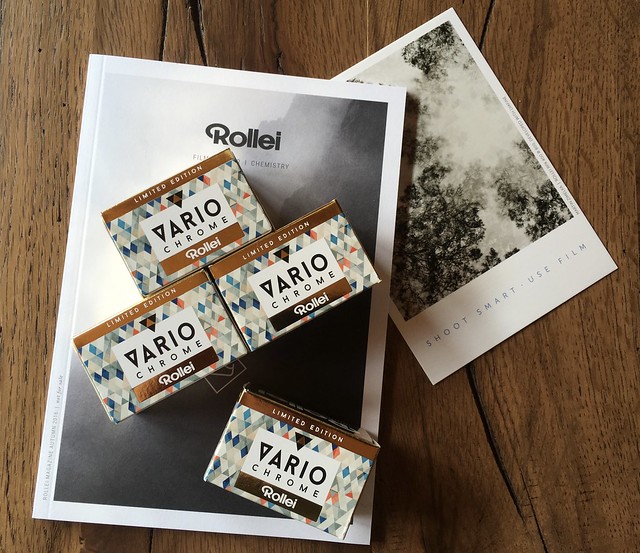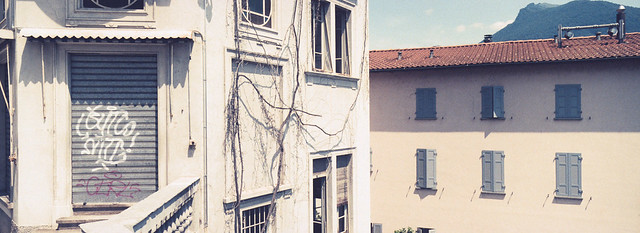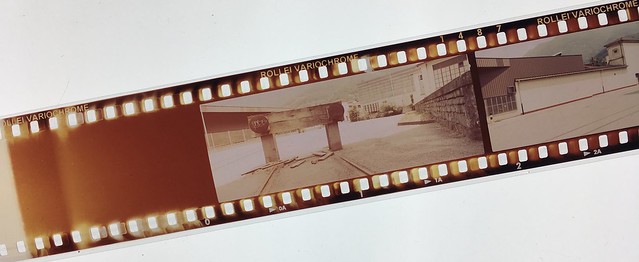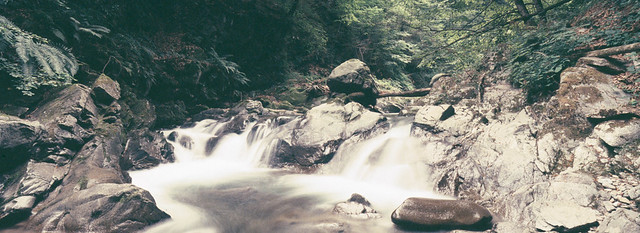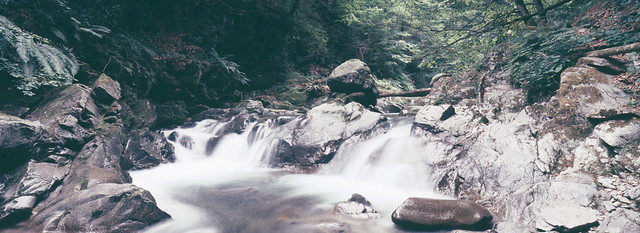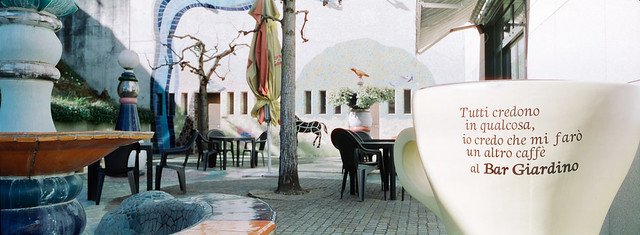I’m going to need to preface this rant with the reminder that none of what I write, or, usually, write about is of the slightest importance in the grand scheme of things. It’s not exactly North Korea.
Recently, trying to make my endless commutes more interesting, I’ve been consuming quite a lot of writing about film photography, and a smaller amount of actual film photography. Most of this has come to me through Twitter, by following @EmulsiveFILM and all the myriad avenues that this leads me down. Sadly, with a few exceptions, I’m finding it all ends up rather un-engaging.
Film don’t live here anymore
Let’s be clear, I’m starting with the premise that the objective of photography is some form of self-expression. Some may call it art, and for some, it is. There is an alternative objective, which is to engage in the craft of taking photographs - and this all too often morphs into obsessing over photographic tools.
A strong thread underlying this (supposed) revival in film photography is that somehow it makes you more creative. Well, if that’s the case, why are 95% of writings on film photography blogs about cameras, film types and other technical stuff? And why is 90% of the photography made up of shots of nothing, frequently drowned in “bokeh”? Mostly it’s photos of cameras, or complete crap supposedly interesting because it’s shot on Wonderblast 125-TripleX developed in LSD-soaked quetzal droppings or whatever. What’s the difference here, between any techie digital photography site and this stuff? Fundamentally, nothing at all. It’s all gear, and gear acquisition, with the excuse that somehow because it is old gear it’s different.
Film’s off
Then we get the other argument, the one that really makes my hackles rise: that film is better because “slows you down, makes you more contemplative”. That is absolute, unadulterated, 100% proof, self-deceiving bollocks. The photographer is responsible for the photography, not the camera. I’ve never heard of a digital camera grabbing it’s owner by the throat screaming SHOOT FASTER DAMMIT! Sure, some cameras - and not only film cameras - absolute do not lend themselves to rapid fire shooting. Anything made by Sigma, for example. But on the other hand, some film cameras won’t get in your way. A Canon EOS-1v will shoot at 10FPS, and has a 36 shot full-frame buffer! Anyway, if you need to rely on a camera being unable to shoot quickly to, er, not shoot quickly, then in my opinion there is a more fundamental issue to resolve here than gear choices.
It seems that the hardcore #FilmsNotDead crew are not only rejecting digital, but state of the art film too. The last mainstream emulsions to be brought to market, like Portra 400, Provia 400X, Ektar 100 and so are incredibly sophisticated products of chemical and manufacturing industry. So why do aberrations like Rollei CR 200, or all of Lomography’s product line even exist ? Well, clearly, because there’s a market for them. People actually want to shoot on crap film, in the mistaken view that it’s artistic.
Agfa? Sorry mate, no call for that these days
The gear acquisition rabbit hole on the analog side of the fence is just as deep, if not deeper than on the digital side, but with the added addiction of the chase after rare, highly sought after objects, or the lure of the fantastic bargain. If film photography is supposed to be a simple, pure remedy to the terrors of digital, why then do film photographers accumulate ridiculous numbers of cameras, most if which don’t work properly, and some of which actually never did ? Yes, it’s interesting, fun even. I completely get that. But creative ? I don’t think so.
What I have found very little of is any evidence that using film specifically makes for interesting photography or photographers. There are certainly some extremely interesting photographers out there shooting partially or exclusively on film, but they don’t make a big deal about it. In fact often they don’t even mention it.
The tail is wagging the dog, here. In my opinion, there are few other reasons to use film than being driven to it by an artistic or creative need. For example, if your intent requires a view camera, you’re going to need to use film. If it requires Medium Format aesthetics, and you’re not a millionaire, ditto. If it requires a Technorama 617, same again. You can also make an argument for the look of certain film stocks, for example Cinefilm, although I’m less convinced of that. But when it is switched around to being driven by wanting to track down and play with old cameras then no, sorry, that’s just gear lust talking. One important proviso here - I’d make a very big exception for black & white. In my opinion, if you want to shoot B&W seriously, then there is no other option than film.
Automatic for the People
So essentially this whole “film’s not dead” thing is just another, relatively bargain basement, strain of Gear Acquisition Syndrome. Leaving aside cost, which is subjective anyway, GAS is deadly for photography, for at least 2 reasons. First, the distraction of wasting endless reading about, talking about, and dreaming about gear. Next, the paralysing effect of having way too much gear (because after all it was so cheap!), and the pressure to use it all - and then to blog and twitter about it to impress the rest of the #FilmsNotDead hipsters. Sure, it’s a hobby, perhaps it’s even fun, but it isn’t photography, and if you got into film to somehow rescue your creativity, it’s also a bit tragic.
Of course I’m not immune to this. I’ve been banging on about Cinefilm 50 in the last few posts, so I’m well aware that I’m keeping my hypocrisy level up to normal. But here’s the thing: I bought two rolls of Cinefilm 50. One, I put in my XPan, and I burned through it in under 1 hour, thoroughly enjoying it. That would be because I’m very in tune with the view of the world that camera gives me. The other, I put in my OM-4, and after two weeks, I had only managed to get to frame 30. While the OM-4 is a lovely piece of retro technology, and the view through the finder is stunning, it really doesn’t make that much sense to use it over my digital E-M1. Cinefilm’s look is interesting, but it isn’t unobtainable from a digital file.
All fixes catered for. Well, they used to be.
But I still use film. In fact for the last month or so I’ve more or less only shot film - all 2 rolls of it. I actually prefer the look of slide film over colour digital, with the major proviso that conditions need to be right. The operating envelope of slide film is very narrow. There is zero scope for highlight or shadow recovery, and really only soft lighting works well. But when all ducks are correctly lined up, there is some quality of colour graduation which I just don’t see in digital, any digital, even Foveon. I’m still going add a proviso though - sometimes my whole perspective just flips, I think “what am I doing wasting my time with this stuff”, and I pick up the digital camera. Actually, if it’s logistically feasible and I’m going somewhere I care about, I really need to have both digital and film with me.
I’m not quite so sure about negative film. Certainly it has a certain look, and has the huge advantage of vast exposure latitude. Highlight rolloff is probably the killer feature for negative film: for one subject I shoot a lot of, a kind of urban landscape, negative film does have a significant advantage both in dealing with harsh lighting and teasing out subtle transitions in texture. But then again, as a photographer, or indeed, a Fine Artiste, I have come to understand that I am very drawn to specific colour characteristics in deciding what to photograph. And actually getting any kind of objective colour fidelity out of negative film is pretty Quixotic. Sure, it can look very nice, but actually getting it to look right is quite another matter, and that can sometimes be very frustrating.
Anyway, my personal experience is that for negative film you can get close enough to make no difference using film simulations, or rolling your own in Photoshop. But I’ve never found a convincing slide film simulation.
There is another argument for using film though, which I kind of referred to above, and revolves around the cameras. I think a very strong argument can be made that older cameras are often better designed, better built, far more straightforward, and offer a far more satisfying, direct user experience than digital cameras. My Olympus E-M1 is a nice camera, but my OM-4 just gets out of the way (although actually my old Canon T90 implemented multi-spot metering far better than the OM-4. The T90 was a fabulous film camera). Such cameras can certainly have a big creative effect, as they insulate you from a lot of the distractions than come with shooting digital (yeah I know, “distractions” like being able to change ISO on the fly, but still…). But it’s still not that simple - if you decide to get into film scanning, well say goodbye to 20% of your life, a large amount of money, and at least half of your sanity (or 75% of it you use Vuescan). And Heavens help you if your eyes start drifting towards all those weird and wonderful “alternative” film types you MUST use to be a Real Artist. No, my recommendation is if you want the full, classic, analog film camera experience, then buy one or two good cameras, a good supply of film, and TURN OFF THE INTERNET. Order your film through magazines, like Popular Photography. Oh, wait…
Of course, this is all just me. On the one hand, I can’t deny that I both share and understand the fascination of film. And my perspective, of one who started in photography pre-digital, will be quite different to some young whippersnapper who’s just discovered Agfa Vista. But to me the downside is that it brings yet another huge set of displacement activities which serve only to take me further away from concentrating on what I think it is I want to do - make satisfying photographs.
I’ll get my coat
By the way, some of the photos here were taken on film. Some were not.




